Enhancing new build homes in a competitive market
Investing in front gardens and communal areas to attract potential buyers.
In a turbulent housing market, where homeowner’s ability to borrow money is affected by interest rates, the state of the economy, and real income level, it can be important to make your new build development stand out. Sometimes, uncertain buyers may need that extra reason or influence to get them over the line. Show home gardens, and other green spaces that greet people when entering a new build development, can significantly increase the appeal to potential buyers, making the properties more inviting and more likely to sell.
According to HomeOwners Alliance, more than two thirds (68%) of homeowners say ‘kerb appeal’ was important in choosing their home and a well-kept front garden was one of the most important factors when they first view a house from the outside. By investing in high quality soft landscaping, with a carefully considered variety of trees, shrubs and perennials, you can enhance the front gardens and communal spaces of your development, giving a sense of distinction that will add value to the new homes.

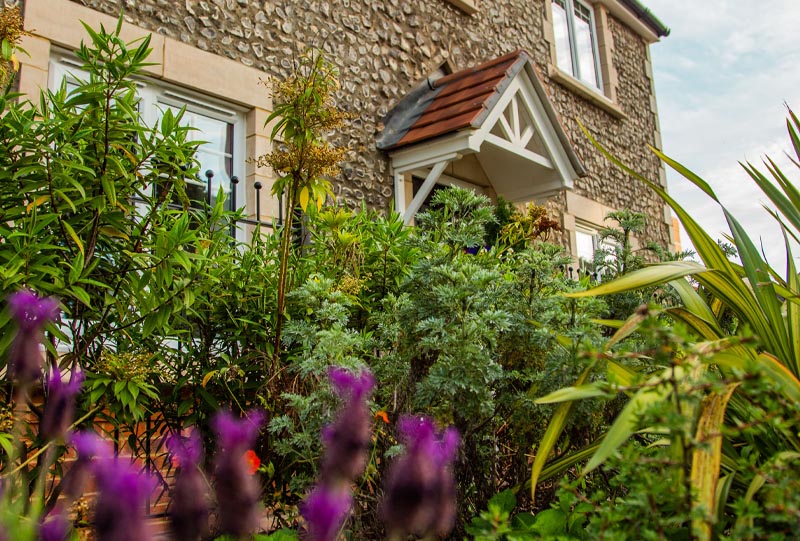
Which plants are best for residential developments?
When it comes to getting that ‘wow factor’ that you want from your green spaces, plant selection and garden design are imperative to achieving strong kerb appeal. It is important to select plants that are suitable for the local climate, aspect, soil type, and ensure they have enough space to grow. You want to make sure your plants have the opportunity to thrive, and offer appeal in the subsequent months that follow, not just weeks.
To add depth and interest, make sure to use a variety of plants with different heights, forms, textures, and colours. You can ensure that your green space is colourful in all seasons by including varieties that provide interest through their flowers, fruit, stems and foliage at different times of the year. Choose low-maintenance plants that will provide structure and interest year-round and that will be easy for residents to look after in the future.
Planting trees and hedges not only adds aesthetic value but will also define boundaries, establish entry points and increase privacy, as well as diffuse wind and provide shade. Our tree recommendations include Pyrus calleryana ‘Chanticleer’, which is a deciduous tree but keeps its leaves longer than most, making it great for screening; Prunus serrata ‘Sunset Boulevard’, with its narrow conical shape; Malus sylvestris, a small, rounded deciduous tree with a spreading canopy; and Tilia cordata ‘Greenspire’, an upright, vigorous deciduous tree. Multi-stem trees, like Amelanchier lamarckii ‘Robin Hill’, which provides seasonal interest with spring blossom and autumnal colour, and Betula utilis var. jacquemontii, an upright tree with bright white bark, add structure and year-round interest to smaller spaces.
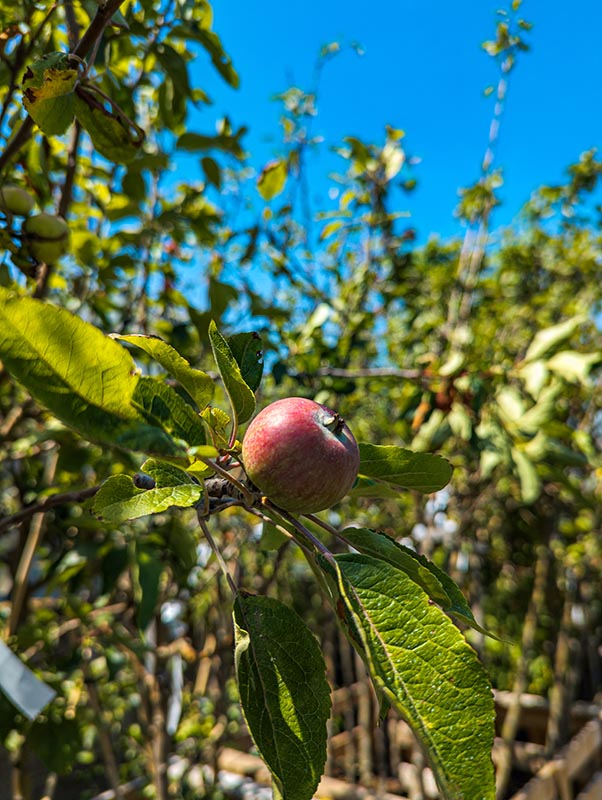
Malus sylvestris
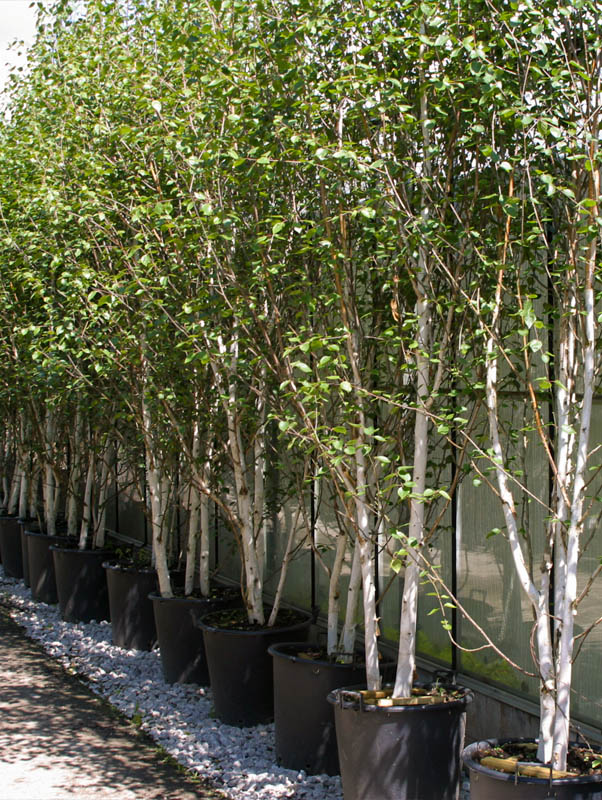
Betula urilia var. jacquemontii
Planting hedges along boundaries softens the appearance of the buildings and hard landscaping, complementing the different construction materials and ensuring the house sits comfortably in its surroundings. Fagus sylvativa, which has lime green leaves and rich autumnal colour; Carpinus betulus, with its oval-shaped, serrated foliage which turns yellow or orange in autumn; Taxus baccata, a bushy evergreen with very dark green needles that forms a dense formal hedge; Prunus lusitanica ‘Angustifolia’, which will tolerate most soil types; Prunus laurocerasus ‘Rotundifolia’, which is vigorous and dense with dark green, glossy leaves; and Ligustrum ovalifolium, with its fast growth rate, soundproofing and windproofing abilities, all make magnificent hedges for these reasons.
Mixed hedging, that includes native species such as Crataegus monogyna, Acer campestre and Corylus avellana, is ideal for less formal boundaries and rural settings. These not only provide seasonal interest but support biodiversity in the form of birds, bees and other pollinators.
Evergreen plants provide architectural structure in borders, so it is worth investing in mature specimens to give instant impact, especially in show home gardens. Greenwood can supply a wide range of topiary – from conifer spirals or columns to cloud trees to clipped balls and cones, across a variety of species. Half standard lollipops from species with colourful foliage, such as Photinia, Ligustrum, Ilex, and Euonymus, are popular for framing doorways.

Photinia x fraseri ‘Red Robin’
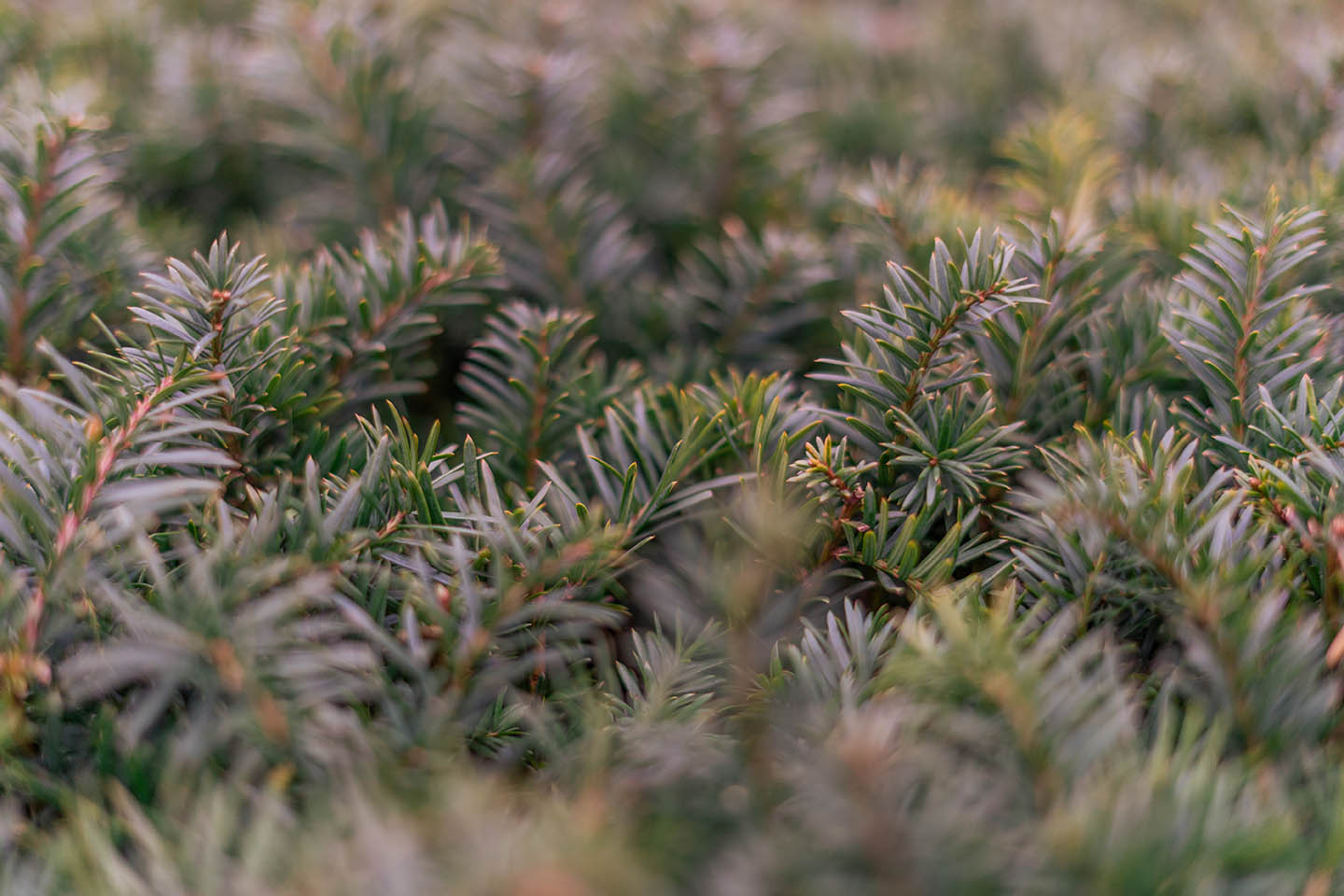
Taxus baccata

Prunus laurocerasus ‘Rotundifolia’

Ligustrum ovalifolium ‘Aureum’
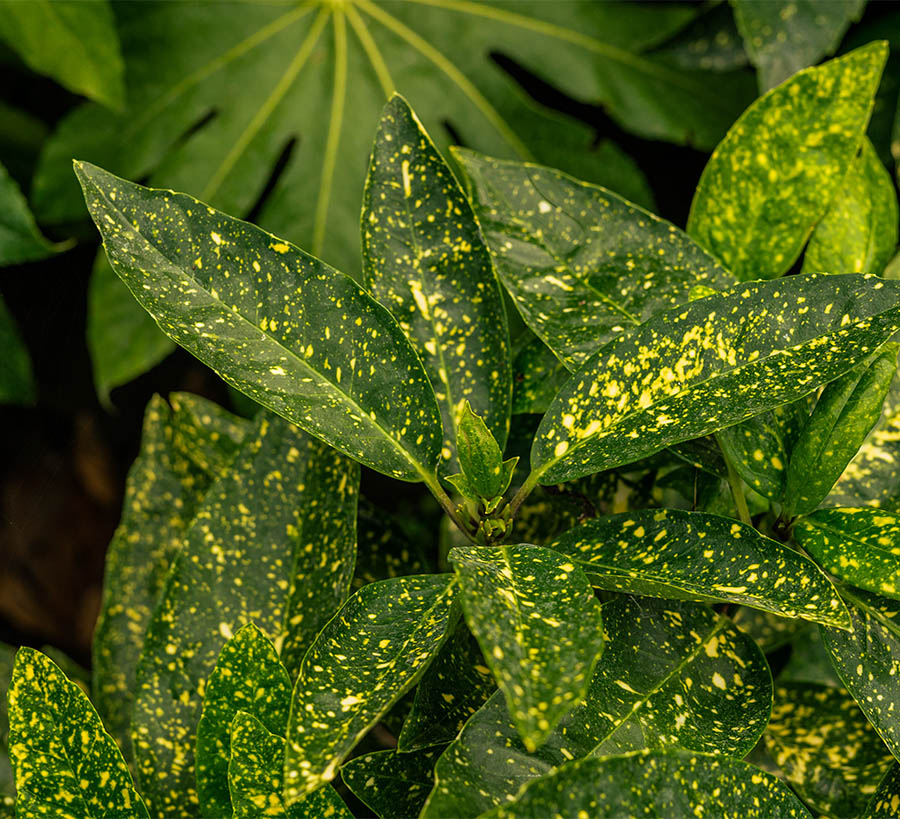
Aucuba japonica ‘Variegata’
Shrubs that will add colour and texture to mixed borders include Aucuba japonica ‘Variegata’, with its large, glossy, yellow spotted foliage; Pieris ‘Forest Flame’ which produces bright red young foliage; and Pittosporum tenuifolium ‘Tom Thumb’ with its dramatic, wavy, dark purple leaves on black stems. Leucothoe ‘Scarletta’ has foliage that emerges maroon, before turning dark green with red edging, finally maturing to bronze in autumn, and Nandina domestica ‘Gulf Stream’ has young purple foliage that transitions to green in summer and bronze in autumn. A couple of options for adding a contrasting leaf shape are Fatsia japonica which has large, palmate, glossy leaves, and Phormium ‘Yellow Wave’ with its bright green and yellow striped strappy leaves.
Flowering shrubs have aesthetic value, provide fragrance and also support pollinating insects. Our favourites include Hebe franciscana ‘Blue Gem’ which has racemes of purple-blue flowers from June to July; Osmanthus burkwoodii which blooms clusters of small, white, highly scented flowers in spring; and Viburnum tinus ‘Eve Price’ which has clusters of pink buds that open into white flowers. These shrubs are all popular and reliable choices for new developments as they are low maintenance, evergreen, provide a variety of shape, colour and texture, and are available in larger sizes.
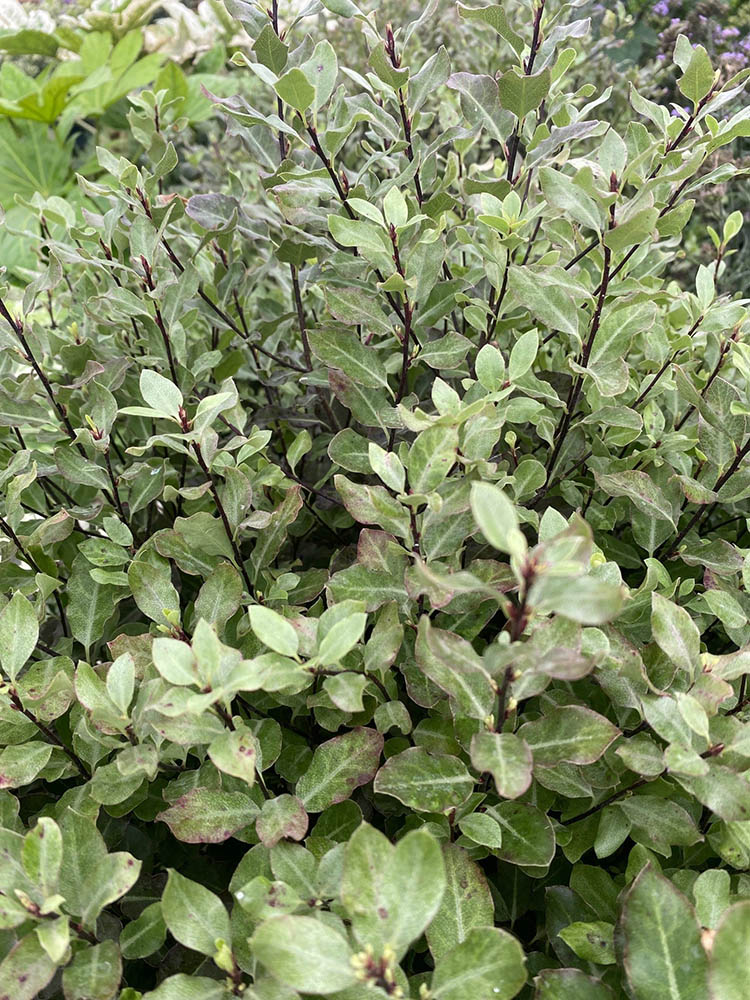
Pittosporum ‘Tom Thumb’
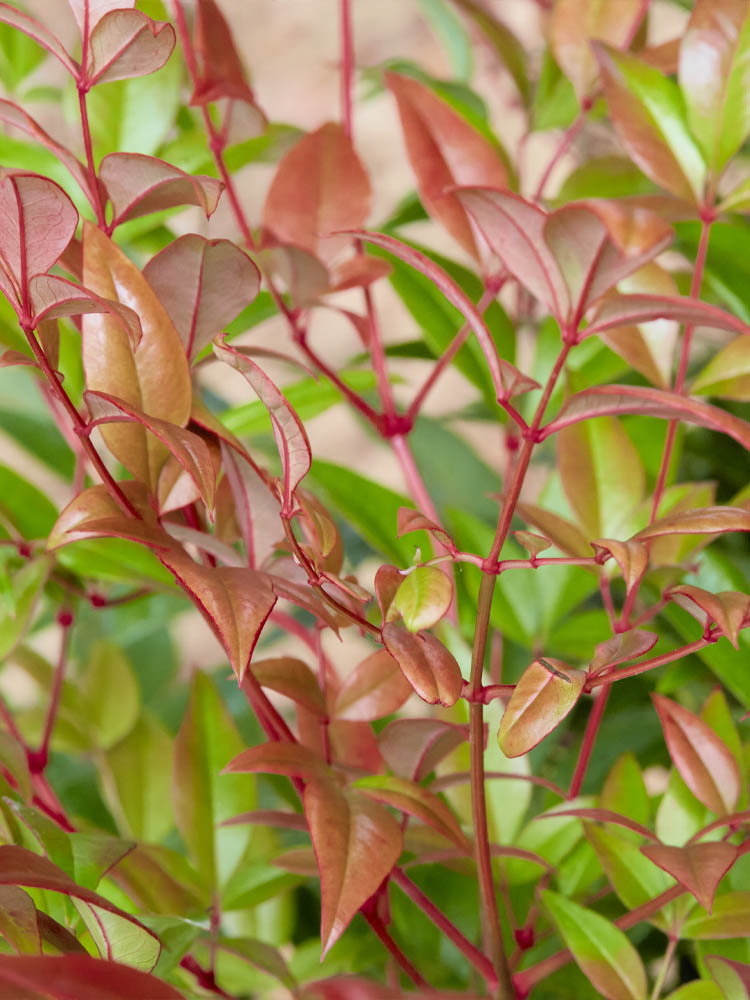
Nandina domestica ‘Gulf Sream’
Smaller, perennial plants can be positioned close together to create the illusion of a more established garden. Examples include Heuchera ‘Plum Pudding’, which has plum-purple, lobed foliage with a dusting of silver-grey; Persicaria bistorta ‘Superba’, which has dense spikes of soft pink flowers from summer to early autumn; Salvia nemerosa ‘Caradonna’, bears upright racemes of violet-blue flowers from June to October; Sedum ‘Autumn Joy’, which has flat-topped, salmon-pink summer flowerheads with starry flowers which transition to a stunning pink-bronze, and eventually copper-red; and Stachys byzantina ‘Silver Carpet’ which forms a dense mat of velvet textured, grey-white leaves.
It’s beneficial to include native plants in your green spaces for a number of reasons – they often require less maintenance, are adapted to the local environmental conditions and best support the local wildlife. In the UK, this could include Betula pendula, a birch with silver-white bark; Rosa canina, a pretty, arching rose; Viburnum opulus with its snowball-like flowerheads; Cornus sanguinea which has red stems, the delicate grass Briza media, Helleborus foetidus with its bell-shaped lime green flowers, Dryopteris filix-mas, a shuttlecock-like fern, and the ground covering Ajuga reptans.
Plants in pots and containers can help to soften down paved areas and highlight entrances, creating a greener appeal. These could be seasonal options that are updated according to the time of year, ensuring that the plants chosen are providing some colourful interest. Suitable plants for containers include Skimmia japonica ‘Fragrans’ which flowers in April and May, Carex oshimensis ‘Evergold’ with its striking yellow foliage, Phormium ‘Evening Glow’ which has colourful, strappy leaves, Hebe × franciscana ‘Variegata’ which has purple flowers from July to September, Nandina domestica ‘Firepower’ with its compact and colourful foliage and Spiraea japonica ‘Golden Princess’ which has bright yellow-green leaves and pink flowers in late summer. Bulbs in containers, like tulips, alliums and daffodils, are an effective way to add seasonal splashes of colour to any garden.
Whilst the plants selected have been chosen to try and minimise maintenance, ongoing care to keep the gardens healthy is important. Make sure to mow the lawns, remove debris, trim hedges and overgrown plants, and keep communal spaces tidy so that the whole road looks well-kept, and appealing to potential buyers.
You can find more detail on all the plant varieties mentioned above in our recently released book, the Greenwood Specification.
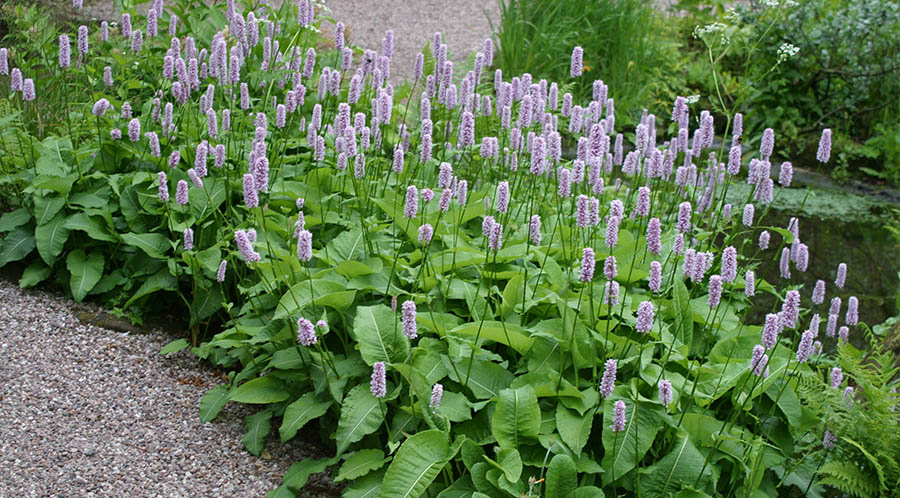
Persicaria bistorta ‘Superba’
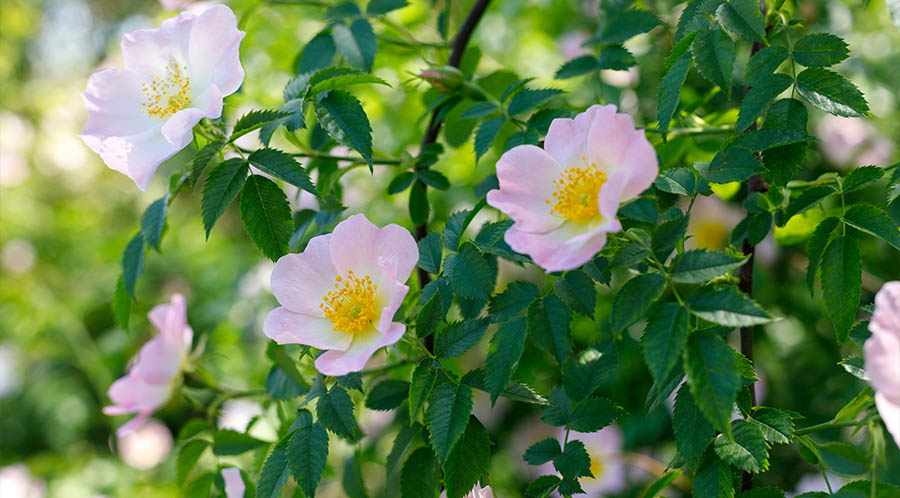
Rosa canina
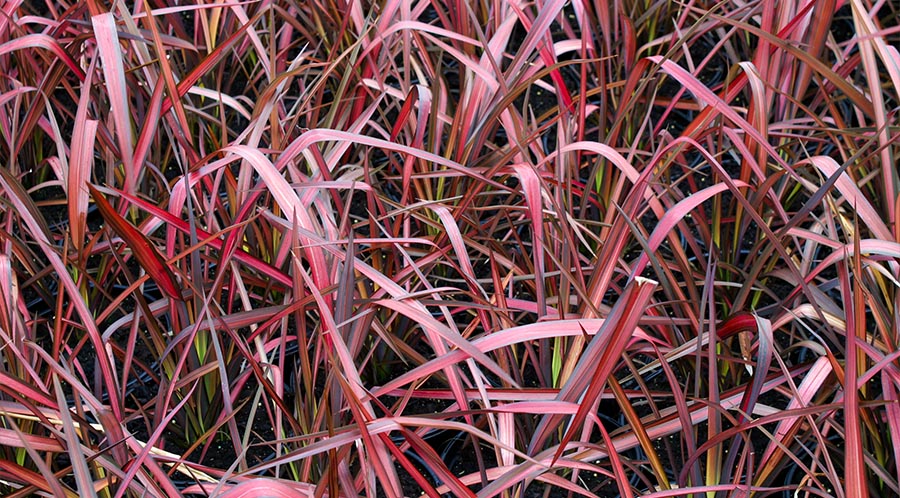
Phormium ‘Evening Glow’
How else can value be added to the outdoor space?
Creating a community garden where residents can grow their own flowers or produce, could provide an extra benefit to buyers, helping to foster a sense of community and pride. This is a significant selling point for retirees who are downsizing or moving into a later living community but still want to continue gardening as a therapeutic hobby.
Other items to consider when planning the development’s green spaces are lighting and furniture which will make it easier for residents to enjoy the open spaces you have provided. Outdoor lighting fixtures will extend the use of the garden, highlight a property’s best features, create ambiance, and improve safety. Create communal seating areas where residents can relax and socialise. Install benches, picnic tables, or small patios for shared enjoyment. Incorporate artistic elements like sculptures or focal points that add character and utilise local materials.
Planning a development that has water neutrality, and does not adversely affect important wildlife sites, is becoming increasingly important to local planning authorities and residents. Considering sustainable landscaping practices like using native plants that support biodiversity, planting with peat-free compost, installing rainwater harvesting methods, or implementing greywater recycling systems will help encourage environmentally conscious buyers, and help to demonstrate environmental responsibility as a landscape architect or developer.
Enhancing the front gardens and communal areas of new houses not only increases their kerb appeal but also fosters a sense of community among residents. These improvements not only make the properties more attractive but also enhance their overall value and distinguish them from other housing developments.
Visit Greenwood Choice at our Fresh Acres Nursery to browse seasonal plants and topiary. The G Team is always available to make recommendations and help with selections.

